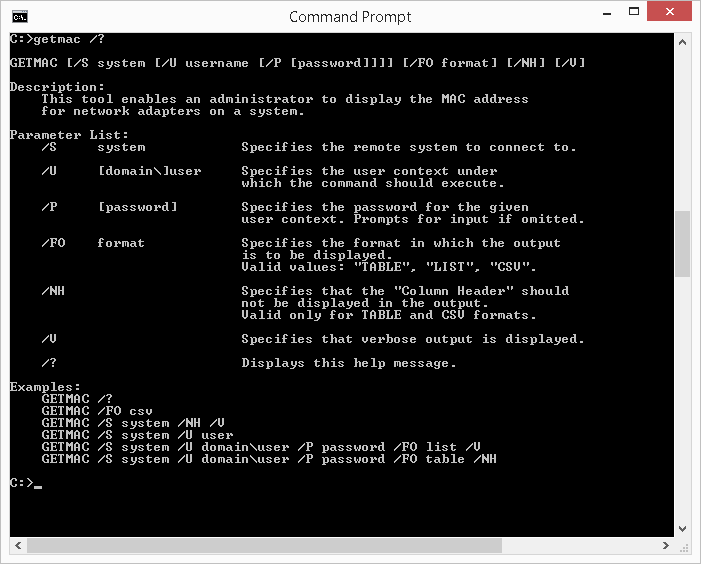
- #Mac cpu info command full
- #Mac cpu info command professional
- #Mac cpu info command mac
- #Mac cpu info command windows
If you see x86_64 in the output, it is x86 and 64-bit. The command above displays an output similar to the example output below. Using the uname command, you can determine if your Linux kernel is 32-bit or 64-bit by running the command below. flags : fpu vme de pse tsc msr pae mce cx8 apic sep mtrr pge mca cmov pat pse36 clflush dts acpi mmx fxsr sse sse2 ss ht tm pbe syscall nx lm constant_tsc arch_perfmon pebs bts rep_good pni monitor ds_cpl est tm2 ssse3 cx16 xtpr sse4_1 lahf_lm Determine if the Linux kernel is 32-bit or 64-bit Below is an example output of the command above with lm in the information. If you don't see lm or see i386, i486, i586, or i686 in the output, then the CPU is 32-bit. If lm is found in the output, then the CPU is 64-bit. LinuxĪccess the command line interface on the Linux operating system, and enter the following command.
#Mac cpu info command mac
The table above shows that all the most recent Mac computers are 64-bit processors. Once listed, perform an Internet search, using the CPU's processor name as a keyword, to determine if it's a 32-bit or 64-bit CPU. Open the Hardware section and find the Processor Name attribute.I know this was very easy, and this is why. You can now stay updated with Mac’s CPU temp and fan speed. This will add the Fanny Widget in the main bar. From the list, Select Fanny by clicking the ‘+’ icon against it. On the About This Mac window, click the More Info option. In your Mac’s notification bar, click Today followed by clicking 1 New at the bottom.Select the About This Mac option in the Apple menu.Click the Apple icon in the menu bar at the upper-left corner.On a macOS computer, follow these steps to determine if the processor is 32-bit or 64-bit. There are no 64-bit versions of these operating systems.

#Mac cpu info command windows
Windows operating systems, from Windows 95 to Windows 2000, are all 32-bit.
#Mac cpu info command professional
If it has the text Windows XP Professional 圆4 Edition, the computer runs the 64-bit version of Windows XP.ĭetermine if Windows 2000 and prior is 32-bit or 64-bit On the General tab of the System Properties window, if it has the text Windows XP, the computer runs the 32-bit version of Windows XP.Press and hold the Windows key and the Pause key, or open the System icon in the Control Panel.Below is a picture and an example of this window.ĭetermine if Windows XP is 32-bit or 64-bit The System window, next to System type, lists 32-bit Operating System for a 32-bit version of Windows and 64-bit Operating System if you're running the 64-bit version.Instead, the Pause key is a secondary function of a function key, and you need to press the Fn key and that function key. Click on the header a second time to change the sort order.Some laptops don't have a Pause key. When the arrow on the CPU header tab points down, the list sorts in descending order with the most active processes at the top. Note that the statistics at the bottom of the window continue to reflect all the processes running on your system.Ĭlick on the "CPU" header in the main portion of the Activity Monitor window to sort the list of processes by the amount of CPU capacity they use. After you've made your selection, set the drop-down menu to "Selected Processes" to track only those items in the list of processes. Command-click on additional entries to add them to your selection individually.

Shift-click on another item in the list to select all the entries between your original selection and the second process name you select.
#Mac cpu info command full
Switch to "All Processes" to see the full list of what's running on your MacBook Pro.Ĭlick on the name of a process to select it. Set the drop-down menu at the top right of the Activity Monitor interface to "My Processes" to view only those that belong to your user ID. Activity Monitor is a Mac performance monitor that shows what programs are running and how many resources they are using. If your computer's running processes claim your full processor power, the combined height of user and system bands reaches the top of the graph. To check CPU usage on Mac, use the default Apple utility Activity Monitor. In green, you'll see the activity from applications you launch and other processes that belong to you as the current user. The activity graph's red bands show how much processor power your computer claims for your operating system. The "% Idle" statistic represents the amount of processor power that's not in use at the time the utility polls the system. System processes belong to the computer itself. User processes belong to you and stem from the applications you launch or the processes they use. Click on the "CPU" tab at the bottom of the Activity Monitor window to display processor-use stats and a live stacked-column activity graph.


 0 kommentar(er)
0 kommentar(er)
